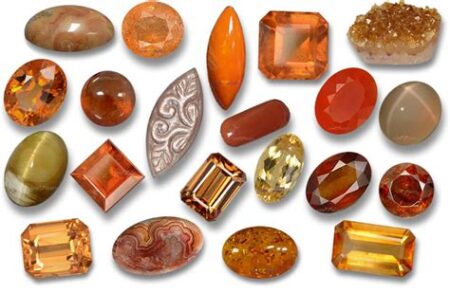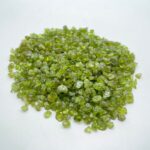Introduction
Iron crystals, also known as magnetite crystals, are fascinating natural formations that possess unique magnetic properties. These crystals have captivated scientists, researchers, and enthusiasts alike, owing to their remarkable characteristics and potential applications in various fields. This article delves into the enigmatic world of iron crystals, exploring their properties, formation, uses, and future prospects.

Properties of Iron Crystals
Iron crystals are composed primarily of iron oxide (Fe3O4). They exhibit strong magnetic properties, making them capable of aligning themselves with external magnetic fields. Furthermore, these crystals possess a high Curie temperature, which refers to the point at which they lose their magnetic properties. This property makes iron crystals ideal for use in high-temperature applications.
Key properties of iron crystals include:
- Strong ferromagnetism
- High Curie temperature (585 °C)
- Octahedral or cubic crystal structure
- Hardness of 5.5-6.5 on the Mohs scale
- Black or brownish-black color with a metallic luster
Formation of Iron Crystals
Iron crystals form naturally in the Earth’s crust through various geological processes. These processes involve the interaction of iron-bearing minerals with oxygen and water. The most common method of magnetite crystal formation is through magmatic crystallization, which occurs when molten rock cools and solidifies. Iron crystals can also form through hydrothermal processes, where hot water interacts with iron-rich minerals.
Applications of Iron Crystals
The unique properties of iron crystals have led to their widespread use in various applications, including:
Electronics
Iron crystals are extensively employed in electronic devices, particularly in the production of magnetic storage media. They are used in hard disk drives, magnetic tapes, and other data storage devices.
Industrial Uses
Iron crystals find applications in the steel industry, where they are used as a source of iron for steel production. They are also utilized as catalysts in chemical reactions and as abrasives in grinding and polishing.
Medical Applications
Iron crystals have been used in medical diagnostics and therapeutics. They are employed in magnetic resonance imaging (MRI) to generate high-quality images of the human body. Additionally, iron crystals are used in drug delivery systems to target and release therapeutic agents directly to affected areas.
Environmental Applications
Iron crystals play a role in environmental remediation. They are used in water treatment plants to remove contaminants from wastewater. Iron crystals can also be used in soil remediation to treat contaminated sites.
Future Prospects of Iron Crystals
Research and development efforts continue to uncover new applications for iron crystals. Some promising areas include:
Magnetocalorics
Iron crystals exhibit the magnetocaloric effect, which involves the change in temperature of a magnetic material when subjected to a changing magnetic field. This property can be harnessed for the development of energy-efficient cooling and heating systems.
Spintronics
Spintronics is a field of research that explores the use of electron spin to create new types of electronic devices. Iron crystals are being investigated for their potential use in spintronic devices, which could revolutionize computing and information storage.
Novel Materials
Scientists are exploring the creation of novel materials based on iron crystals. By manipulating the composition and structure of iron crystals, it is possible to create materials with tailored properties for specific applications.
Understanding Customer Needs
In the dynamic world of technology, understanding customer needs is paramount for developing successful products and services. When it comes to iron crystals, customers have specific wants and needs that must be addressed:
Performance and Reliability
Customers demand iron crystals that deliver consistent and reliable performance in their applications. They require crystals that are stable, durable, and can withstand harsh conditions.
Efficiency and Cost-Effectiveness
Customers are always seeking cost-effective solutions. Iron crystals should be priced competitively and offer high efficiency to minimize operating costs.
Customization and Flexibility
Different applications require different types of iron crystals. Customers need suppliers who can provide customized solutions tailored to their specific requirements.
Environmental Considerations
Customers are increasingly environmentally conscious and prefer products that meet sustainability standards. Iron crystals should be sourced ethically and manufactured with minimal environmental impact.
Common Mistakes to Avoid
To ensure the successful implementation of iron crystals in various applications, it is important to avoid common mistakes:
Improper Selection of Crystal Type
Not all iron crystals are created equal. Different types of crystals have unique properties that are suitable for specific applications. It is crucial to carefully consider the desired properties before selecting the appropriate crystal type.
Incorrect Crystal Orientation
The orientation of iron crystals can significantly impact their performance. It is essential to ensure that crystals are properly aligned to maximize their magnetic properties.
Overheating and Demagnetization
Iron crystals can lose their magnetic properties if they are subjected to excessive heat. It is important to follow proper handling and storage procedures to prevent demagnetization.
Contamination
Iron crystals are susceptible to contamination by impurities. It is important to use high-quality crystals and avoid contact with foreign substances that could degrade their performance.
Conclusion
Iron crystals are captivating natural formations with extraordinary magnetic properties. Their unique characteristics have led to their widespread use in electronics, industrial applications, medical diagnostics, and environmental remediation. As research and development continue, new applications for iron crystals are constantly being uncovered, promising to revolutionize various fields. By understanding customer needs, addressing common mistakes, and exploring novel materials, we can unlock the full potential of iron crystals and drive innovation in the years to come.




























